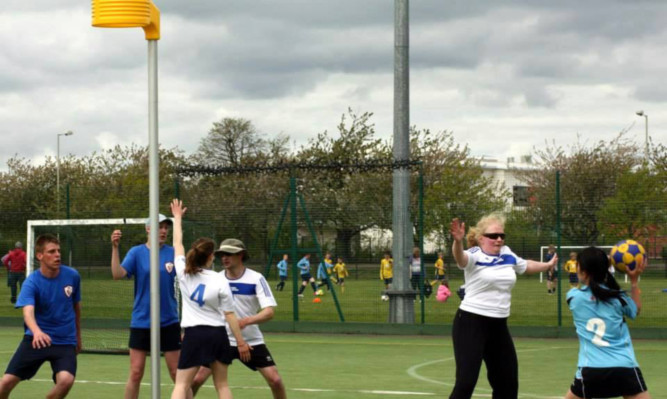Sporty school children in Tayside and Fife have been getting to grips with something a little bit different recently with the introduction of korfball to the curriculum.
Eight schools have taken part in a pilot scheme to highlight the rapidly-growing sport and the project is due to reach a head on Saturday at the inaugural Scottish Schools Korfball Open.
The Open, run by the Scottish Korfball Association, will feature a mixture of skills workshops led by qualified coaches and competitive games, and is part of the International Korfball Federation’s ‘Year of the Youth’ festivities.
It may well be a sport that few people would class as a household name, but Michael Nicholson, secretary of the Scottish Korfball Association, believes the recent initiative has been hugely beneficial in improving the sport’s profile.
“For several weeks now volunteers from Dundee Korfball Club, with the support of Active Schools staff, have been visiting schools in the area to deliver taster sessions in the sport to pupils in Primary Six and Seven,” he said.
“The scheme is financed by the 2014 Communities Fund and is a return to korfball’s roots. It was first developed by a schoolteacher in the Netherlands as a way of having boys and girls play sport together on an equal footing.
“The rules encourage teamwork and quick movement, and are designed to prevent physical strength dominating.”
Korfball is an exciting, non-contact ball sport for teams of four men and four women each.
From the outside, the game looks something like a cross between netball and basketball, but its unique rules have been tailored to give both men and women equal opportunities to score, and to emphasise teamwork over individual performances.
Saturday’s first Scottish Schools Korfball Open will run between 1pm and 4pm at the Dundee International Sports Centre and it is hoped the exposure will boost interest in Dundee’s Junior Korfball Club, which meets at the Ardler Complex every Thursday from 5.30pm to 6.30pm.
The junior club will be completely free for the next year, thanks to generous funding from Foundation Scotland’s Red Nose Day fund.
